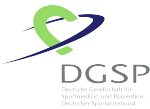Infektionsrisiken durch Aerosolübertragung bei sportlichen Aktivitäten
Englischsprachiges Editorial der Ausgabe 6/2021 von Dr.-Ing. Christof Asbach, Institut für Energie und Umwelttechnik Duisburg und Dr. Gerhard Scheuch, GS BIO-INHALATION GmbH zum Thema "Aerosole im Sport". Die Autoren erörtern den aktuellen Stand und geben Empfehlungen zur Reduzierung des Infektionsrisikos bei sportlichen Aktivitäten und Großveranstaltungen. Dieser Artikel ist Teil unseres Fokusthemas "COVID-19: Infos und Empfehlungen". Den Link zur Übersicht aller Beiträge des Themenschwerpunkts finden Sie am Ende des Textes oder durch Eingabe des Suchbegriffs #Covid-19 in das Suchfeld dieser Website.
The current pandemic has bestowed many restrictions on both professional and amateur sporting activities and led to the postponement of major sporting events like the European Soccer Championship and the Olympic Games from 2020 to 2021.
While during the early phase of the pandemic, the focus of infection control was still mainly on smear infections, it has become clear that infections through aerosols, i.e. the inhalation of airborne viruses are much more dominant (8). Viruses become airborne when they are exhaled by an infectious person. It is well known that with every breath, humans exhale small liquid aerosol particles in a size range of < 0.5 µm (9) that mainly consist of surfactant (11). Particles exhaled during other activities like talking and singing are larger with average sizes of > 1 µm (2). These liquid aerosol particles, often erroneously termed “aerosols” , are formed in the alveoli and, if exhaled by an infectious person, contain viruses. The concentration of exhaled particles depends on the age as well as the lung health status of a subject. It was found that a healthy person exhales only a few particles per liter of air, whereas a super-emitter can exhale up to several hundred thousand particles per liter (7). What makes the aerosol infection path so insidious is that these particles are too small to be seen by the naked eye and that they almost do not settle and can remain airborne for at least several hours (5).
Two different routes of aerogenic transmission can be distinguished, the direct and the indirect route. Direct transmission or infection occurs when a person directly inhales the highly concentrated aerosol cloud exhaled by an infectious person or the larger droplets emitted during coughing or sneezing. The risk of direct infections can be significantly reduced by keeping distance and properly wearing efficient masks. An indirect transmission or infection occurs when the viruses exhaled by an infectious person remain in an aerial space and are subsequently inhaled by another person. It should be noticed that due to their size, exhaled particles almost perfectly follow air flows, since they are too small to be affected by particle inertia and too large for a significant effect of Brownian motion (5). The problem with indirect transmission is that this infection can happen, even if the infected person has already left the room, because airborne SARS-CoV-2 can remain viable for more than an hour (13). Whereas direct infections may happen both indoors and outdoors, indirect infections may only occur indoors, where the viruses are exhaled into a room and remain within a confined space, where they can accumulate. Consequently, the infection risk outdoors is significantly lower than the risk indoors (4). The risk of indirect infections can be reduced by lowering the virus concentration in a room through proper ventilation, technical air cleaning systems, short residence times and the wearing of masks.
When an infectious person occupies a closed room, the virus concentration increases linearly with time. Other persons in the same room constantly inhale the increasing virus concentration and thus the dose of inhaled viruses increases with the time squared, spent in the in indoor environment, i.e. twice the time results in four times the dose. The viral dose, necessary to cause an infection is not finally known, but a value between a few hundred and a few thousand virus copies is currently discussed (6). The time necessary to accumulate such an inhaled dose in a closed room depends on the infectivity of the infected person and the volume of the room. It was shown that with a super-emitter (emitting 100,000 virus copies per minute) in a closed room with a volume of 100 m³, other persons can get infected within the order of minutes (10). It is therefore important to ensure good ventilation and/or air cleaning in indoor environments in order to keep the virus concentration and thus the risk of indirect infections low. The risk of transmission can be mitigated significantly by masks covering nose and mouth. Masks can substantially decrease the number of aerosol particles inhaled and therefore decrease the likelihood of infection or the severity of disease, because the viral load is decreased. Masks should consequently be used in indoor facilities, during meetings and travel depending on the state of the pandemic (12).
Outdoors, any motion of a subject and/or air (wind) causes immediate dilution of the exhaled particle and virus concentration. In addition, the exhaled breath is usually transported upwards due to buoyancy effects of the warmer exhaled compared to surrounding air. The air volume outdoors is nearly infinite, so that the particle/virus concentration cannot accumulate, and in that way making indirect infections almost impossible outdoors. Outdoor infections, particularly between two or more persons in motion, are therefore much less likely than indoor infections.
What does this mean for sporting activities and large sports events like the upcoming Olympic Games in Tokyo? We should clearly distinguish between indoor and outdoor activities as well as between direct and indirect infections. In any outdoor sporting activities, indirect infections are very unlikely, as mentioned earlier. Direct infections may occur during outdoor contact sports, although there are not many such disciplines. Direct infections in outdoor non-contact sporting activities like athletics, cycling or tennis are almost impossible. Even in disciplines like rowing or marathon, where the athletes are in closer contact to each other, the infection risk is low, because firstly, the exhaled breath will be diluted rapidly due to buoyancy and the movement of the athletes so that the number of accidentally inhaled viruses would be too low to cause an infection and secondly, the athletes are not face to face so that a direct inhalation of the exhaled air by another athlete is not possible.

Nächste Seite: 2 von 2
In contrast, indoor sporting activities require more attention. Direct aerosol infections may occur during contact sports, like wrestling or judo, where the athletes remain with their faces close to each other and may directly inhale the other athlete’s breath. The risk of indirect infections depends on the volume of the facility and the technical measures taken to improve the indoor air quality. In general, the infection risk is higher the smaller the facility and the more people occupy it. However, considering that (Olympic) sports facilities typically have very large volumes, it can be stated that the indirect infection risk is also rather low here. Exemplary calculations of relative infection risks can be calculated using on online tool provided by the RWTH Aachen (9).
Finally, there remain the premises jointly used by the athletes and coaches before and after the competitions, including changing rooms, toilets and physiotherapy facilities. These rooms are rather small and consequently virus concentrations may quickly reach critical levels. To avoid the buildup of virus concentrations in such rooms, they should ideally be well ventilated with outdoor air, e.g. by fully opening windows. Where this is not possible, technical ventilation solutions, like an efficient heating, ventilation and air conditioning (HVAC) system with either 100% fresh air supply or with efficient filters (like HEPA filters) shall be used. Alternatively, room air cleaners of a sufficient size can be applied. These air cleaners recirculate the air in the room and remove particles and viruses every time the air passes through the device. Usually the air cleaners are labelled with the clean air delivery rate (CADR). The room air volume should be recirculated and filtered multiple times per hour. For example, the German Umweltbundesamt recommends at least about six times per hour, i.e. the CADR in m³/h should be six time the room volume in m³, whereas the US Environmental Protection Agency recommends 4.875 times per hour. Blocken et al. showed that already an air exchange rate of 2.2/h resulted in a significant reduction of the infection risks in a gym (3).
In summary, the following recommendations for reducing the infection risks of athletes in sporting activities, including those during major sporting events like Olympic games can be given from an aerosol research point of view:
– Risks of a direct aerogenic infection during sporting activities is highest in contact sports, because minimum distances cannot be maintained. These risks are in general similar indoors and outdoors, but most contact sports like wrestling, judo etc. are indoor activities.
– Risks of indirect infections during outdoor sporting activities are extremely low due to the immediate dilution of the exhaled aerosol by the surrounding air.
– Indirect infection risks during any indoor sporting activities are significantly higher than during outdoor activities. They increase with decreasing volume and increasing occupancy of the facility.
In typical cases, where a low number of people are present in a rather large facility, the risk of an indirect infection can be considered to be moderate or low. The bigger the room the lower the risk of infection.
– The most critical environments are small rooms, like toilets, changing rooms and physiotherapy facilities. Due to the long residence time of viruses and virus-containing particles in the air, one may even get infected in these rooms without meeting another person. Protective measures like proper natural or technically enforced ventilation and/or air cleaning are highly advisable for such rooms and the proper use of efficient face masks is recommended wherever possible.
– In poorly ventilated indoor environments, the risk of an infection increases with the square of the residence time. Consequently, one should reduce this residence time whenever possible.
– In addition to strict regulations and hygiene concepts of the organizers regarding the protection against infections, it is recommended to inform all athletes and coaches of potential risks and ask for personal responsibility.
Since the knowledge base on SARS-CoV-2 and its aerosol transmission is still constantly growing and it cannot be ruled out that the virus will mutate further, the choice and scale of countermeasures may need to be flexibly adjusted according to the state of the pandemic (1).

■ Asbach C, Scheuch G
Alle Beiträge der DZSM zum Fokusthema „COVID-19: Infos und Empfehlungen“ finden Sie hier oder durch Eingabe des Suchbegriffs #Covid-19 in das Suchfeld dieser Website.
Quellen:
Adami P, Cianca J, McCloskey B, et al. Infectious diseases outbreak management tool for endurance mass participation sporting events: an international effort to counteract the COVID-19 spread in teh endurance sport setting. Br J Sports Med. 2021; 55:181-182. doi:10.1136/bjsports-2020-103091
Asadi S, Wexler AS, Cappa CD, et al. Aerosol emission and superemission during human speech increase with voice loudness. Sci Rep. 2019; 9: 2348. doi:10.1038/s41598-019-38808-z
Blocken B, van Druenen T, Ricci A, et al. Ventilation and air cleaning to limit aerosol particle concentrations in a gym during the COVID-19 pandemic. Build Environ. 2021; 193: 107659. doi:10.1016/j.buildenv.2021.107659
Bulfone T, Malekinejad M, Rutherford G, Razani N. Outdoor Transmission of SARS-CoV-2 and Other Respiratory Viruses: A Systematic Review. J Infect Dis. 2021; 223: 550-561. doi:10.1093/infdis/jiaa742
Gesellschaft für Aerosolforschung. Position paper of the Gesellschaft für Aerosolforschung on understanding the role of aerosol particles in SARS-CoV-2 infection. 2021. https://doi.org/10.5281/zenodo.4350494 [27th May 2021].
Karimzadeh S, Bhopal R, Nguyen Tien H. Review of infective dose, routes of transmission and outcome of COVID-19 caused by the SARS-COV-2: comparison with other respiratory viruses. 2021; 149: e96. doi:10.1017/S0950268821000790
Ma J, Qi X, Chen H, Li X, et al. COVID-19 patients in earlier stages exhaled millions of SARS-CoV-2 per hour. Clinical Infectious Dieseases. 2020. doi: 10.1093/cid/ciaa1283
Morawska L, Cao J. Airborne transmission of SARS-CoV-2: The world should face the reality. Environ Int. 2020; 139: 105730. doi:10.1016/j.envint.2020.105730
RWTH. RisiCo Aachen University. 2021. https://risico.eonerc.rwth-aachen.de/ [27th May 2021].
Scheuch G. Breathing is enough: For the spread of influenza virus and SARS-CoV-2 by breathing only. J Aerosol Med Pulm Drug Deliv. 2020; 33: 230-234. doi:10.1089/jamp.2020.1616
Schumacher S, Schmid H, Asbach C. Effektivität von Luftreinigern zur Reduzierung des COVID-19-Infektionsrisikos. Gefahrst Reinhalt Luft. 2021; 81: 16-28. doi:10.37544/0949-8036-2021-01-02-18
Schwarz K, Biller H, Windt H, Koch W, Hohlfeld J. Characterization of exhaled particles from the healthy human lung - A systematic analysis in relation to pulmonary function variables. J Aerosol Med Pulm Drug Deliv. 2010; 23: 371-379. doi:10.1089/jamp.2009.0809
Shurlock J, Muniz-Pardos B, Tucker R, et al. Recommendations for Face Coverings While Exercising During the COVID-19 Pandemic. Sports Med Open. 2021; 7: 19. doi:10.1186/s40798-021-00309-7
van Doremalen N, Morris D, Holbrook M, et al. Aerosol and surface stability of SARS-CoV-2 as compared with SARS-CoV-1. N Engl J Med. 2020; 382: 1564-1567. doi:10.1056/NEJMc2004973



